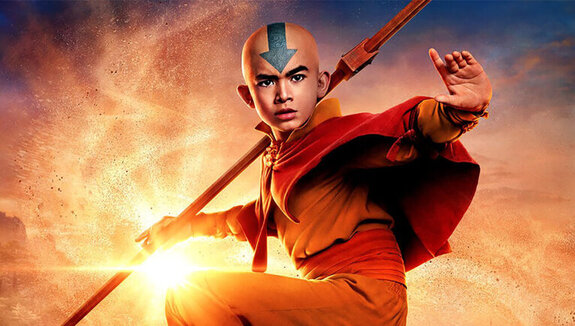Avatar: The Last Airbender – Analysis
– All in one game review, New anime release, 2024 animes, upcoming anime, trending anime, and lots more!!.
On February 22nd it premiered on Netflix the first season of the live-action series adaptation based on the animated series Avatar: The Last Airbender (Avatar: The Last Airbender / Avatar: The Last Airbender).
The series was produced by Albert Kim Pictures, Rideback (Sherlock Holmes, The Lego Movie, Death Note) and Nickelodeon Productions and worldwide distribution within the service of Netflix. The series is executive produced by Albert Kim, Jabbar Raisani, Dan Lin, Lindsey Liberatore It is Michael Goi. Albert Kim is the showrunner of the series, which has photography direction by Michael Goi, Michael Balfry It is Stewart Whelan and trail composed of Takeshi Furukawa (Star Wars: The Clone Wars, The Last Guardian).
Synopsis for Avatar: The Last Airbender
This live-action reimagining of the beloved animated series follows Aang, the young Avatar, as he learns to master the four elements (Water, Earth, Fire, Air) to restore balance to a world threatened by the terrifying Fire Nation.
Completing 20 years in 2024, Avatar: The Last Airbender (Avatar: The Last Airbender / Avatar: The Last Airbender) is an animation that has a large legion of fans who watched the original animation, saw its sequel in Avatar – The Legend of Korra (The Legend of Korra) and followed the franchise in several books, comics and content in different media. After the director’s failed attempt at the first adaptation of the work, M. Night Shyamalan There was an extremely bitter taste that a live-action adaptation based on the work would not be possible.
Since the announcement of the production of a second attempt at a live-action based on the animation, fans have always had the two behind with what could emerge. Initially there was relief from the original creators, Michael Dante DiMartino It is Bryan Konietzko, in the history of the franchise, were participating in the production, but this relief vanished when they announced that they were leaving the production due to creative differences. The second problem was the involvement of Netflix within the series, mainly due to the series of critical failures of adaptations based on anime, such as Death Note It is Cowboy Bebop.
After the premiere of the live-action series adaptation of One Piece a ray of hope has emerged for fans of Avatar: The Last Airbender (Avatar: The Last Airbender / Avatar: The Last Airbender). If a more complex work could be adapted faithfully to its content, there was hope and the series’ promotional content showed that a good adaptation was about to emerge.
Like this One Piecethe production of Avatar: The Last Airbender (Avatar: The Last Airbender / Avatar: The Last Airbender) had the challenge of translating the playful language that animation had into live-action. In this aspect, the production made a choice that may not please many fans of the animation, the live-action series does not have much of the comic tone that the animation has and this is so that its story can focus on conveying an anti-war message.
Throughout the entire season of the live-action Avatar: The Last Airbender This anti-war message becomes increasingly evident, first showing how Aang sees himself as extremely out of place in his time and how uncomfortable he feels seeing the world completely divided. Throughout the character’s journey he is still pressed by guilt for his disappearance, something that in the animation was well alleviated by comical scenes. Katara and Sokka are the characters who serve as guides for Aang in these new times, but they also have a questioning side about the direction the war is taking people. Prince Zuko is the character who is taken to the front line with the sole objective of having the right to return to his old life and Uncle Iroh has the role of guiding his nephew and preventing him from making the same mistakes he made during his younger years. combat. During the journey of the main characters we also see the story of figures who were injured in some way by the war. Like, Jet and his group of young refugees and the inventor Sai, for example.
The anti-war message that is addressed this season also mixes with the environmental theme. In an important arc we have the approach that the destruction of natural environments can cause disasters involving the lack of food and other essential items. This approach takes place with a more spiritual tone, something that is also present throughout the season, but the message about the destruction of nature in a discriminatory way is very clear.
Looking at it as adaptation, Avatar: The Last Airbender manages to remain very faithful to the original content that exists within the animation. However, the series mixes several important arcs, enabling a better rhythm for its story. There are also several changes regarding the order of some events, but these help to improve the plot in which they were inserted. I liked that the series made many additions with the participation of Avatars before Aang, it even uses the franchise’s own expanded universe in these moments, with information that was only revealed in content from the books and comics, there is even a moment that emulates an iconic scene in The Legend of Korra (The Legend of Korra). The biggest change compared to the animation was the inclusion of Fire Lord Ozai and Princess Azula in the first season. Their inclusion worked well to give a better context to Prince Zuko’s story, we still have the two characters serving as articulators for the plot involving Commander Zhao.
The fight scenes work very well throughout the series, I was a little uncomfortable at some moments when many camera cuts were used during the fights, but overall the scenes are very well produced. The use of special effects for the use of the elements also works, although I think that elements like Fire and Air end up with the effects working much better than Water and Earth. The iconic animals and spiritual beings are very well produced and visually very close to the beings that appear in the animation. The series’ scenarios are also very well produced, with some visually incredible locations, such as Omashu.
Photography is another very positive element within the production of the series, bringing a different color to each environment and with a clear choice of taking the colors from the main scene of the last episode and bringing colors only when the firebending illuminated the environment. The series’ soundtrack is well contained, the moments in which it shines are precisely when it uses iconic themes already known from the animation, be it the Avatar theme or the chords played when the Fire Nation appeared.
Overall, the first season of Avatar: The Last Airbender (Avatar: The Last Airbender / Avatar: The Last Airbender) maintains the essential theme of the animation. Even with a much lesser comedic tone, the story of Aang’s journey is very well told in live-action. The series maintains the original animation content as a whole, despite the many changes as an adaptation, but adds things from the franchise’s expanded universe.
Avatar: The Last Airbender – Analysis
Follow Animewik on Google News and receive alerts for the main news about Hot trending game, Anime series, entertainment and lots more! Avatar: The Last Airbender – Analysis
------------------------------------------------------------------------------------
SHARE POST AND EARN REWARDS:
Join our Audience reward campaign and make money reading articles, shares, likes and comment >> Join reward Program
FIRST TIME REACTIONS:
Be the first to leave us a comment - Avatar: The Last Airbender – Analysis
, down the comment section. click allow to follow this topic and get firsthand daily anime updates.
JOIN US ON OUR SOCIAL MEDIA: << FACEBOOK >> | << WHATSAPP >> | << TELEGRAM >> | << TWITTER >
Avatar: The Last Airbender – Analysis








